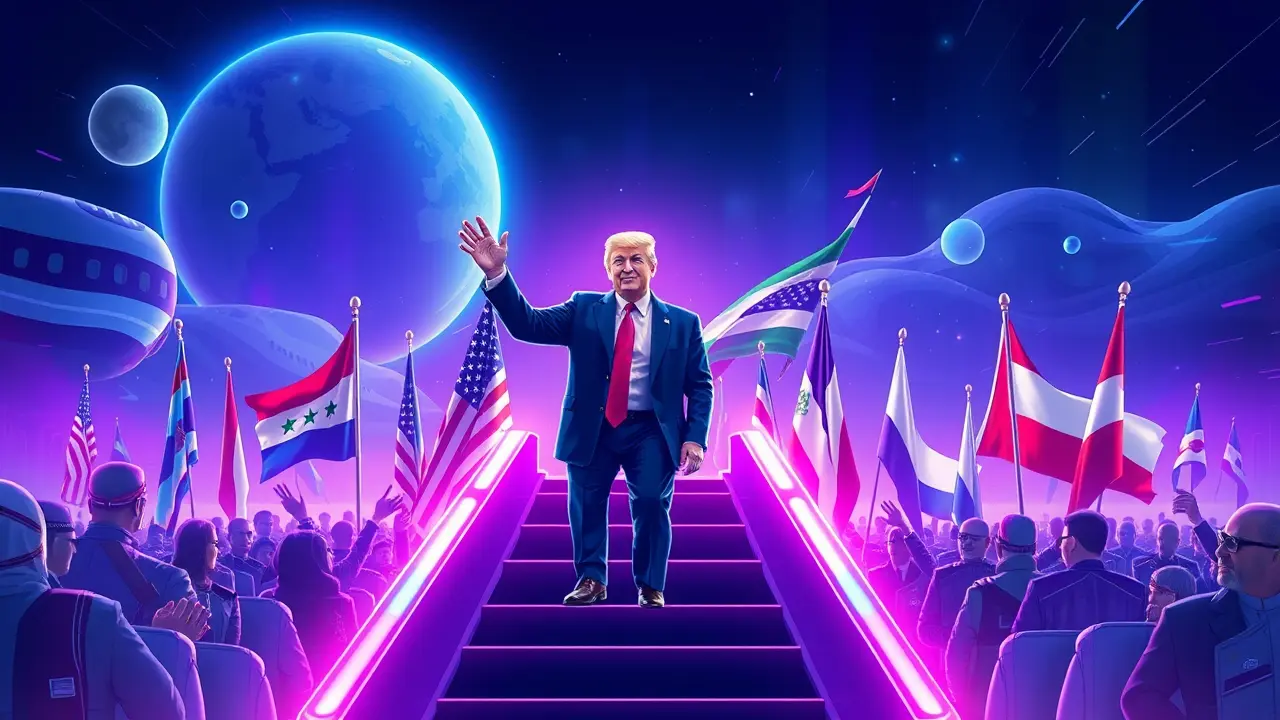Trump's 24-Hour Diplomatic Tour of the Middle East
In a whirlwind diplomatic maneuver that felt less like statecraft and more like a campaign rally writ global, the U. S.president’s 24-hour blitz through the Middle East was a masterclass in political theater, a victory lap meticulously staged for domestic consumption rather than a substantive exercise in foreign policy. Think of it not as a nuanced negotiation but as a primetime special, a high-stakes political ad shot on location where every handshake, every staged photo op, was a calculated soundbite in the broader media war.The details, the tedious minutiae of diplomatic agreements and regional stability? They were conspicuously absent, mere background noise to the main event: the projection of strength and deal-making prowess. This was a strategic play straight from the modern political playbook, where perception often trumps policy, and the narrative crafted for the evening news holds more immediate value than a densely-worded joint communiqué.We’ve seen this script before—the sudden summits, the dramatic overtures—but this particular tour was executed with the breakneck pace of a politician who understands that in today’s fragmented attention economy, momentum is currency. The destinations themselves were carefully chosen arenas, each representing a different facet of a complex geopolitical puzzle, yet the approach was uniformly transactional, echoing the 'America First' doctrine that has defined this administration's foreign policy from its inception.Analysts watching from the sidelines were left dissecting the symbolism: the messages sent to allies and adversaries alike, the subtle shifts in regional alignments, and the unmistakable signal that traditional, slow-moving diplomacy is being supplanted by a more impulsive, personality-driven model. The consequences of such a rapid-fire approach are multifaceted; while it may yield short-term headlines and satisfy a base hungry for displays of dominance, it risks alienating long-standing partners who value consistency and depth over spectacle.It raises profound questions about the future of American leadership in a region perpetually on the brink—will this style of diplomacy lead to durable solutions, or merely to a series of temporary, fragile understandings that collapse under the weight of their own lack of detail? The tour, in its sheer brevity and focus on optics, was less about building bridges and more about claiming credit, a tactic that may win a news cycle but could ultimately complicate the already labyrinthine path to peace and stability. This is the new face of high-stakes politics, where the battle isn't just fought in closed-door meetings but on the screens of voters thousands of miles away, and this 24-hour mission was a definitive, sharp, and dynamically framed battle report from the front lines of that ongoing war.
MA
Maya Torres123k2 days ago
reading this from the year 2099, still relevant smh it's all just for the cameras isn't it
0
DA
Daniel Reeves123k2 days ago
tbh this is just how all diplomacy works now it's all for the cameras not sure why anyone is surprised
0
